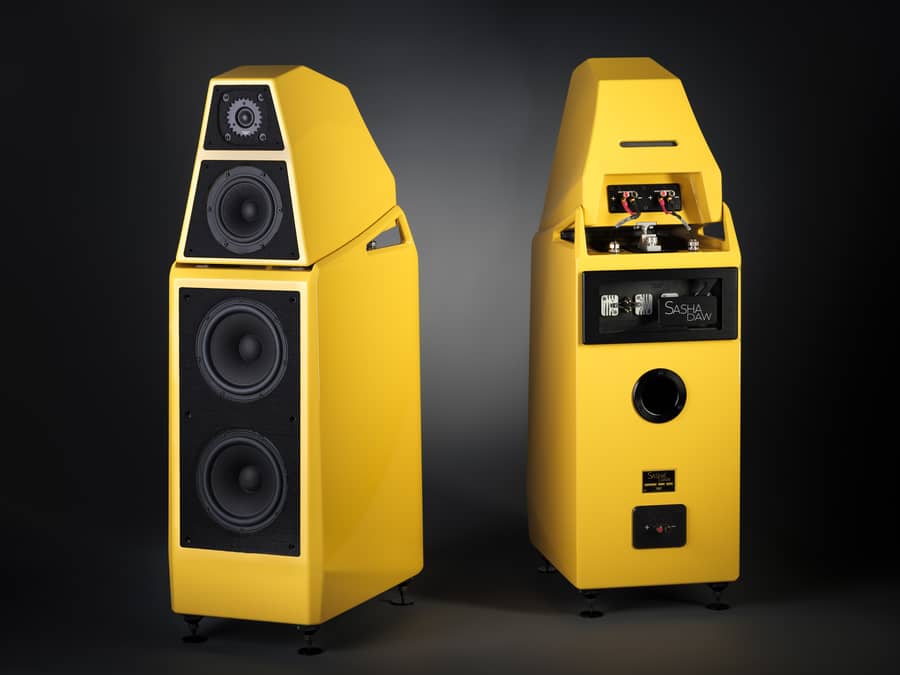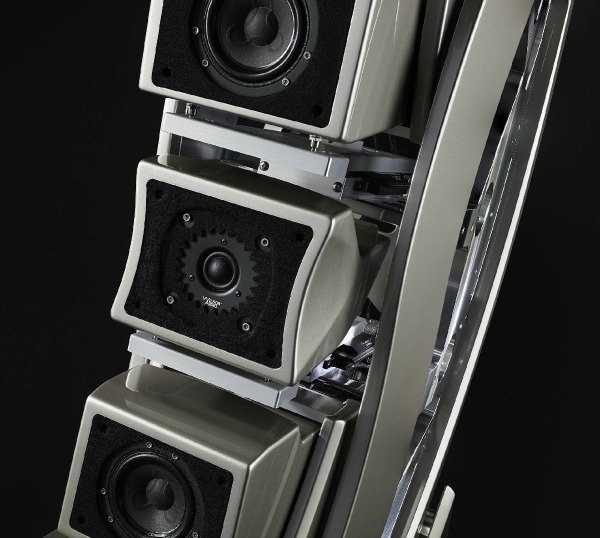The new wallmount speaker from Wilson, the Alida, incorporates the same anti-jitter crossover  technology that underlies the full-size Wilson loudspeakers. “The greatest challenge for any wall-mount loudspeaker is accounting for the deleterious interaction with the wall and ceiling, as well as degradation caused by the mount itself. Alida minimizes wall/ceiling resonant interactions through thoroughly re-engineered mounting system” says the company’s press release. The Alida is mounted to its bracket via a new individually machined, aircraft-grade aluminum mechanism which Wilson say will reduce wall-born interactions and resonances.
technology that underlies the full-size Wilson loudspeakers. “The greatest challenge for any wall-mount loudspeaker is accounting for the deleterious interaction with the wall and ceiling, as well as degradation caused by the mount itself. Alida minimizes wall/ceiling resonant interactions through thoroughly re-engineered mounting system” says the company’s press release. The Alida is mounted to its bracket via a new individually machined, aircraft-grade aluminum mechanism which Wilson say will reduce wall-born interactions and resonances.
Where the outgoing Wilson Wallmount could be rotated up to 10 degrees, Alida’s new mount provides up to 30 degrees of rotation.
For those clients upgrading from the Wallmount Series 2 to the Alida, Wilson has made the task of swapping the two loudspeakers relatively straightforward by providing compatible mount locations on the X-material wall bracket. Simply remove the old bracket and replace it with the Alida bracket. For an additional fee, Wilson will paint the X-material bracket to match the wall or the Alida itself.
Using materials technology first developed for the Alexandria XLF and the Sasha W/P, Wilson have been able to “reduce the resonant signature of the Alida enclosure to vanishing levels”. A rear-wave diffuser, similar to the technology found in Wilson’s larger speakers, Is employed to “reduce time-domain distortion inside the cabinet”.
The new Wilson CST tweeter, first found a home in the Alexandria XLF is used In the Alida and uses a new silk dome design. This version of the CST features a bespoke rear-wave chamber, designed specifically for the Alida platform. Additionally, Wilson will offer a custom version with the its modified titanium dome tweeter for those customers replacing the outgoing Surround, who still use front speakers with this tweeter.
The grill frames on the Alida are built entirely from its proprietary composite X-Material which Wilson say converts unwanted vibrations into heat. 










































































































































































































You must be logged in to leave a reply.